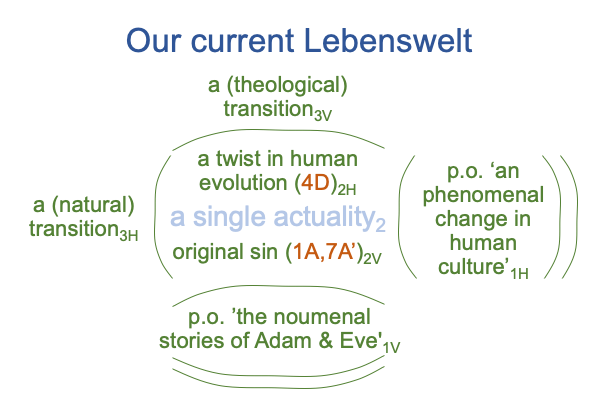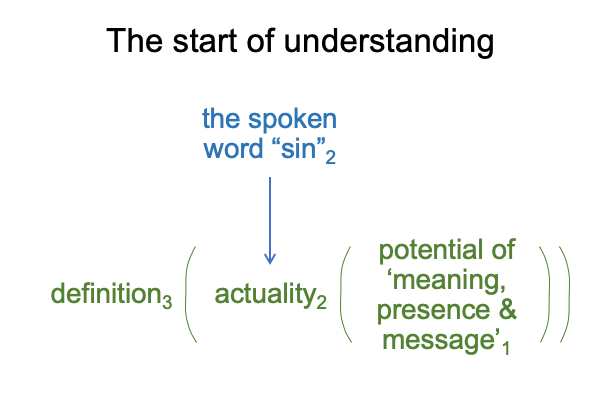Looking at Loren Haarsma’s Book (2021) “When Did Sin Begin” (Part 11 of 21)
0080 Chapters two and six, as B and B’, bookend the C:D:C’ pattern of chapters three, four and five. Combining chapter and signifier, 4D concerns human evolution. 3C and 5C’ concern natural evil and the imago dei in the Lebenswelt that we evolved in. 2B and 6B’ concern the nature of mystery.
0081 Haarsma wrestles with three mysteries.
The first mystery is the intersection of all evolution2H and God’s creation2V. The single actuality is our world2.
A second mystery resides within the first. The intersection of human evolution2H and the intention, creation, blessing and feeding of humans (and his animals)2V yields the single actuality of the Lebenswelt that we evolved in2.
A third mystery marks a transition from the first mystery. The single actuality of our current Lebenswelt2 binds a twist in human evolution2H and the doctrine of original sin2V.
0082 These three mysteries take this reader into an abduction.
The doctrine of original sin2V emerges from (and situates) the noumenal stories of Adam and Eve1V. By “noumenal”, I mean “pertaining to the thing itself”. The thing itself, the initiation of our current Lebenswelt, is captured in this one story that associates to all other origin stories of the ancient Near East.
Does that imply that the potential1H that underlies the twist in human evolution2H concerns the emergence of civilization in southern Mesopotamia?
What is the nature of the adaptive change1H that potentiates the emergence of unconstrained social complexity?
0083 This is the question that frames the fictional narrative, An Archaeology of the Fall.
This e-book, like chapters one through seven of Haarsma’s book, exhibits a semitic textual structure. The greek textual structure strives to eliminate possibilities in order to arrive at an answer that is more correct than any other. The reader is led to the correct answer through the process of elimination. The semitic textual structure uses various tricks, patterns and word play in order to induce an awareness of a possibility. The semitic textual structure asks the reader to recognize a possibility.
The greek and semitic textual structures are discussed in An Instructor’s Guide To An Archaeology of the Fall.


